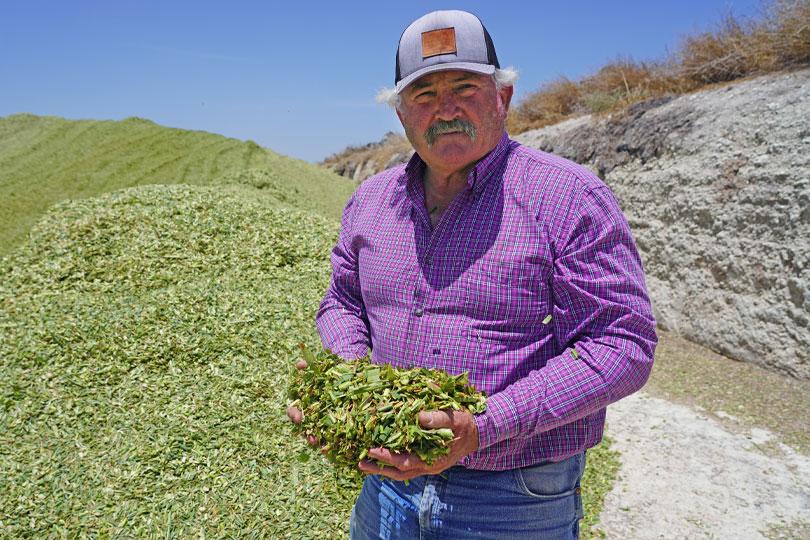By Emmy Powell
Communications Specialist
Jay Procter has been harvesting silage for nearly 30 years, traveling thousands of miles and across state lines.
He did so again this year, except with fewer acres due to persistent drought conditions during the growing season.
“The drought has been horrible. Crops from South Texas to Kansas are down anywhere from 90% to 25%. I would say, on average, it’s probably more like 50% or 60%, but it’s been truly terrible,” said Procter, who is an Erath County Farm Bureau member. “It’s hurt lots and lots of people, farmers and ranchers. It’s just unbelievable.”
During drought, silage plays an essential role. While crops may not make it to their full potential, they can be used for silage.
Corn silage is a feed made from chopped up pieces of corn ears, leaves and stalks, and it requires less water than corn grown for grain. Silage can also be made from sorghum where the whole plant is chopped prior to maturity and high in moisture. Both are highly palatable feeds.
“Silage is extremely important in a drought situation. We can make it out of some crops that are not premium quality crops. That helps in a situation like drought,” he said. “We can take some stressed corn, stressed sorghum, and we can make a pretty nice product that can be used to feed livestock.”
And it’s in demand by dairies and feedlots.
“Silage is considered a premium in most places with the dry weather and conditions,” he said. “A silage product will make up a large majority of the daily ration for that animal. In the dairy world on good corn silage, they’re going to feed some 35 plus pounds per cow per day. So, you take a 10,000-cow dairy feeding 365 days out of the year. That’s a lot of feed. Feedlots, it’s the same deal.”

Procter’s custom silage operation is a family business. What started as a need to chop their own silage grew into a thriving and successful business.
“I was growing silage for years, and at that time, getting anybody to harvest it was a problem. So, we got into it basically to take care of ourselves,” he said.
Then, neighbors asked him to chop. Other farmers became customers, and Jay Procter Farms, Inc. continued to expand.
They are on the road from late March through the end of August, and he also harvests for some customers in late October and November.
Being on the road so often can take its toll.
“At times, it’s difficult. We get tired, but we’ve adjusted to it over the years and been fortunate enough to meet a lot of really good people and work with some really good folks in a lot of places,” Procter said. “It has its advantages, too. Yeah, we work really hard at times, but then when we get that out of the way, we’re able to kick back and enjoy some of it a little more than we would if we were working eight to five somewhere every day.”
Watch a video with Procter discussing silage harvest.

